How To Plant Decorative Grass
Last update: Home & Garden
22 Ornamental Grasses for Landscaping - Best Decorative Grasses
Ornamental grasses are highly universal plants, perfect for any garden. Most of them don't take any special requirements, abound quick and fifty-fifty blossom. Grass gardens have been increasingly popular recently. Would y'all like something similar in your m? Detect the most interesting, unusual ornamental grasses.
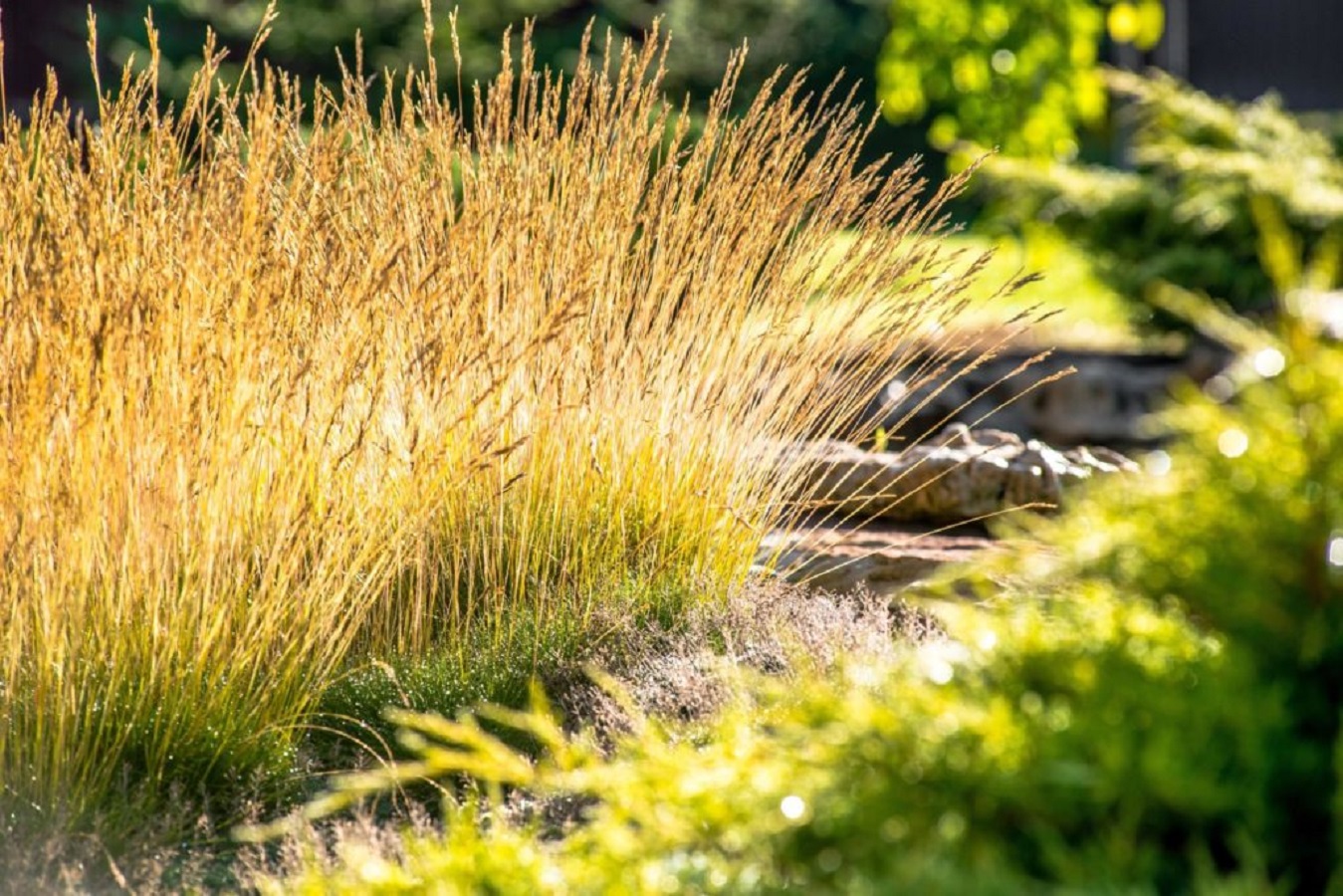
Is it a good idea to put ornamental grasses in the garden?
Ornamental grasses are a perfect solution for those who desire their gardens to expect proficient, but don't accept plenty time or don't like taking care of plants. Decorative grasses are like shooting fish in a barrel to maintain, which is their biggest advantage. Fifty-fifty if you forget to have care of them for some time, they will retain their visual aspect.
Furthermore, many ornamental grasses look beautiful in the garden throughout the whole yr. Some of them bloom, but the non-blooming varieties even so look neat without flowers.
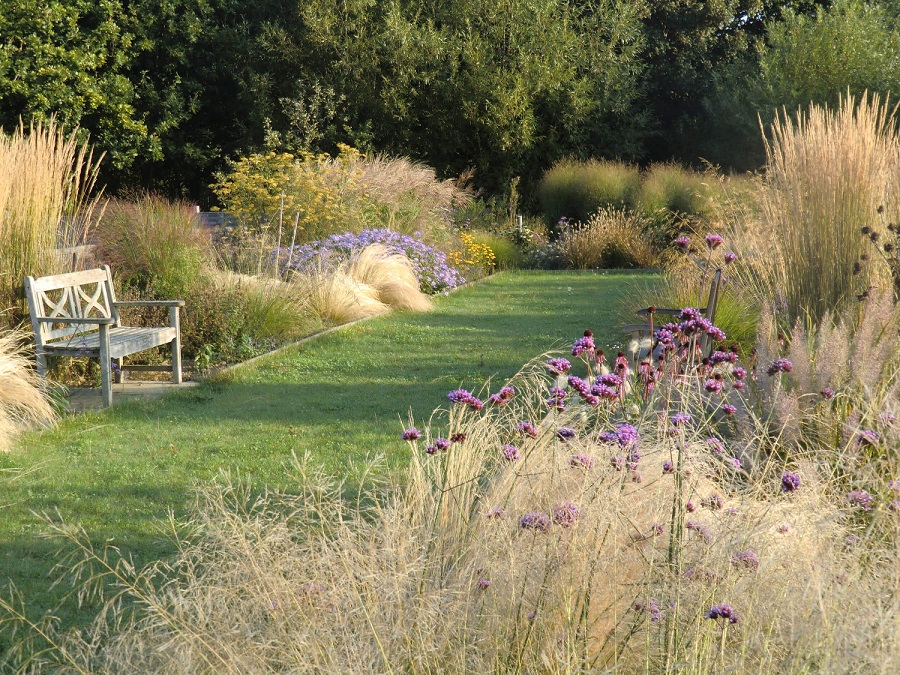
When to institute ornamental grasses in the garden?
When you should plant ornamental grasses in your garden, depends on the species you choice. Nonetheless, leap is the typical best time for planting any plants. Thanks to this, they have a chance to take root before the vegetation period, and develop proper immunity before autumn and winter, when temperatures are lower.
Ornamental grasses - seedlings and availability
Seedlings of decorative grasses used for landscaping are typically bachelor in any gardening shop. Sometimes, you lot tin fifty-fifty observe them in supermarkets. You can likewise purchase seeds of ornamental grasses instead of buying seedlings. They are just as accessible, although the Internet offers more than interesting species. Certain unusual ornamental grasses can be establish online, while being unavailable in physical stores.
How to combine ornamental grasses?
Ornamental grasses tin be matched with basically any plant. They look perfect with small and big flowers. Perennial plants wait especially good when surrounded past them. In this case, ornamental grasses can either act every bit a fragile complement, or become a greater part of the organization.
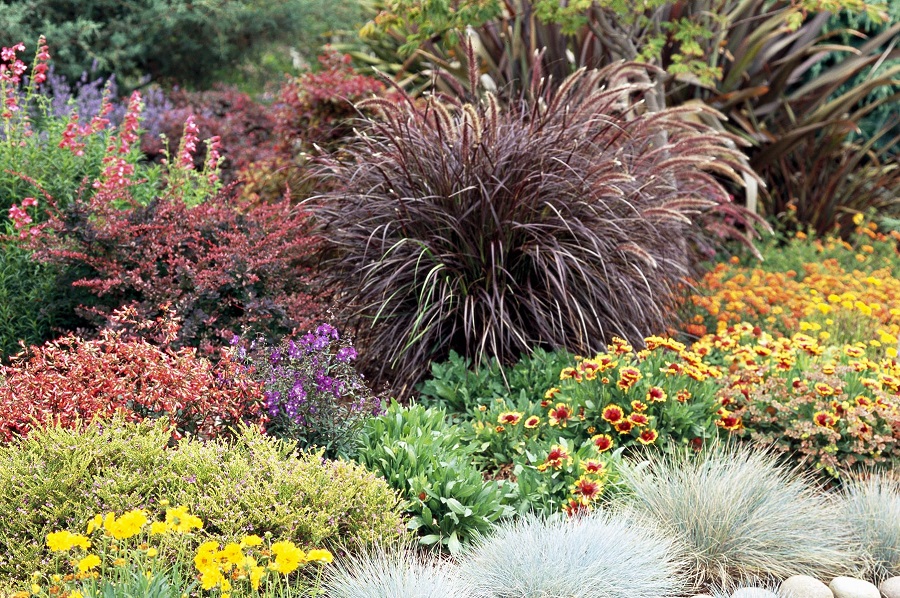
Drought-resistant ornamental grasses
Ornamental grasses that can withstand long periods of drought is a perfect choice for those who want to minimize the amount of work in their garden. Thanks to this, if there is no precipitation for a long flow of time in summer, you don't have to h2o the plants. The selection of ornamental grasses is quite wide in this regard. Larn about a few of them.
Reedgrass (Calamagrostis)
Reedgrass is 1 of the very natural-looking ornamental grasses - it looks almost wild when planted in the garden. Yous can use it in many arrangements - the many varieties of this plant give you plenty of options. Sometimes, this decorative grass is mistaken for pampas grass - although they are not the same.
Reedgrasses love growing in the sun or a slight shade. These ornamental grasses also need fertile soil with an addition of humus. They don't like excessive moisture. If overwatered, they are more than decumbent to various diseases, e.g. fungi.
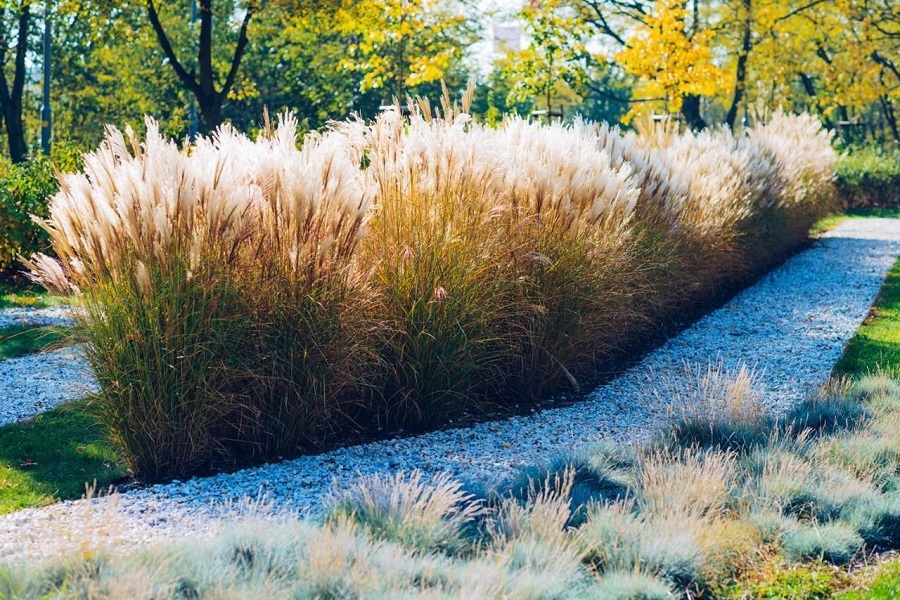
Lovegrass (Eragrostis)
Purple lovegrass (Eragrostis spectabilis) is a beautiful merely rare plant. Information technology'due south typically owned by long-time gardeners who managed to get their easily on it while collecting various species. This decorative grass is characteristic for its unusual looks:
- small but thickly accumulated flowers,
- sharp-ended leaves,
- a wide shape.
Lovegrass doesn't take any special needs as for the soil. Information technology grows perfectly even in a poor footing. But make certain to provide plenty sunlight to it. The institute shouldn't be blocked by other plants, ornamental shrubs or trees.
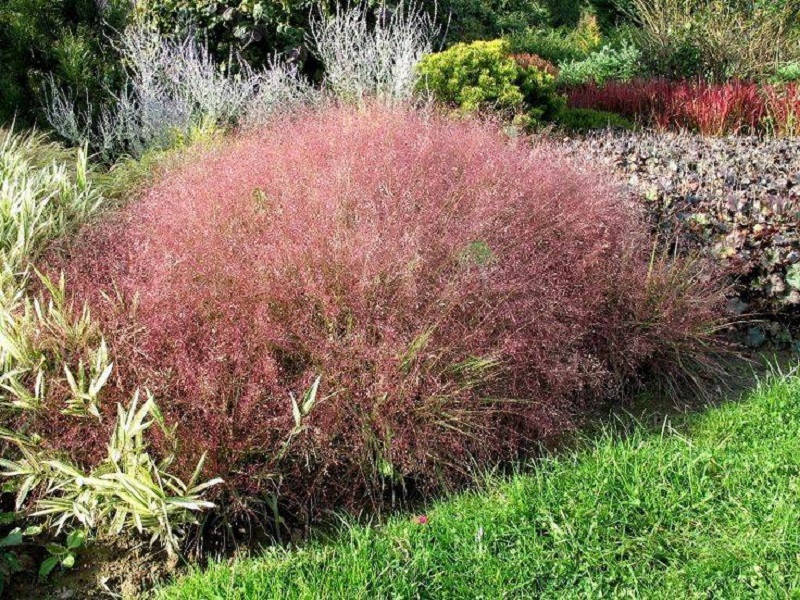
Blue lyme grass (Leymus arenarius)
Blueish lyme grass is an ornamental grass which often appears around seaside areas. Interestingly enough, it grows at that place naturally. Which doesn't hateful you cannot take it in your garden.
Bluish lyme grass needs a partly permeable sandy soil. The ground doesn't have to exist fertile nor moist. The institute loves growing in full lord's day. Additionally, this ornamental grass is frost-resistant.
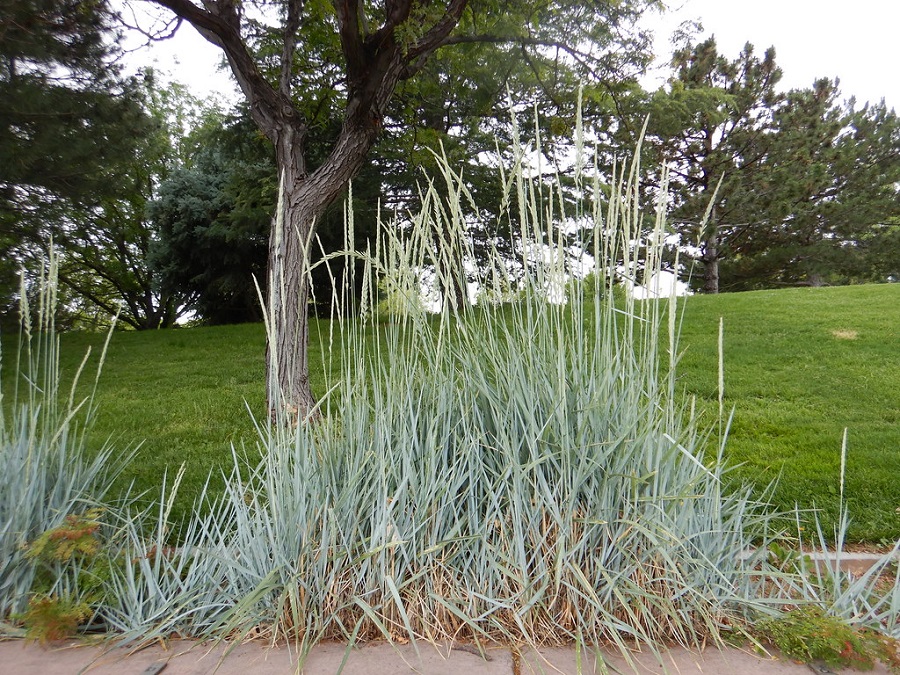
Dropseed (Sporobolus)
Dropseed is an unusual tall ornamental grass. In proper conditions, information technology can grow up to 3 meters tall. As it turns out, there are over 200 dissimilar varieties of this type of decorative grasses. Thanks to this, one can easily find a suitable institute of this type for their garden - particularly that they differ in advent as well.
Take a look at the most popular varieties:
- Sporobolus virginicus
- Sporobolus anglicus
- Sporobolus heterolepis
- Sporobolus wrightii
A sunny spot is the basic element of growing this type of decorative grass. The soil doesn't have to be fertile - the footing can exist sandy or rocky. Moderate moisture is important as well.
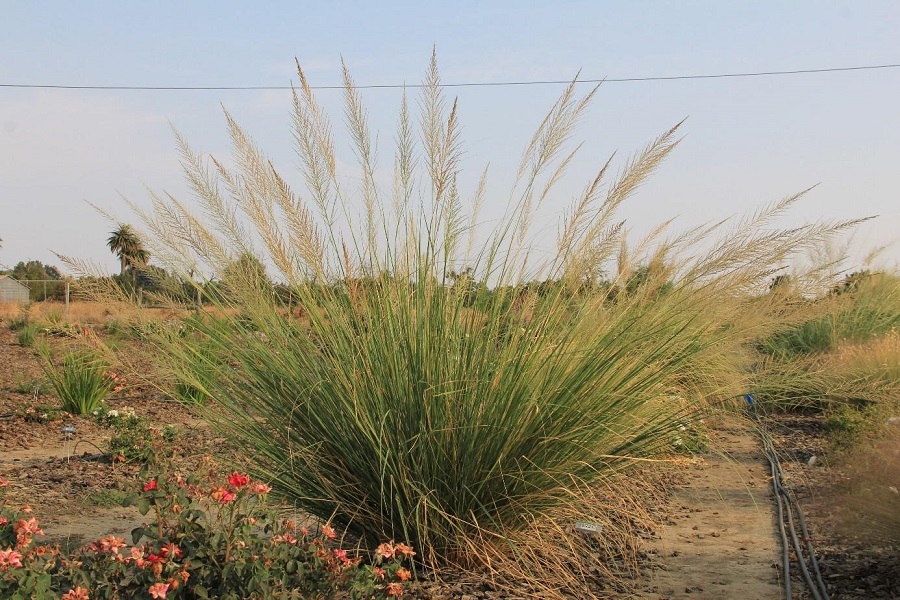
Depression-growing ornamental grasses
Low-growing ornamental grasses are a pop group of plants. They are perfect for small gardens, where clarity is as of import as the decorative aspect. In that location are many unique-looking short ornamental grasses perfect for any garden. Take a expect at some of them.
Quaking grass (Briza media)
Quaking grass is an incredibly low plant - typically, it doesn't abound taller than thirty-50 cm. It grows best in sunny spots. The soil should exist rich in humus, although it doesn't accept to exist very fertile.
Quaking grass has sure universal uses. Many people dry it and use in bouquets. In some regions, this ornamental grass is also an boosted ingredient of animate being feeds.
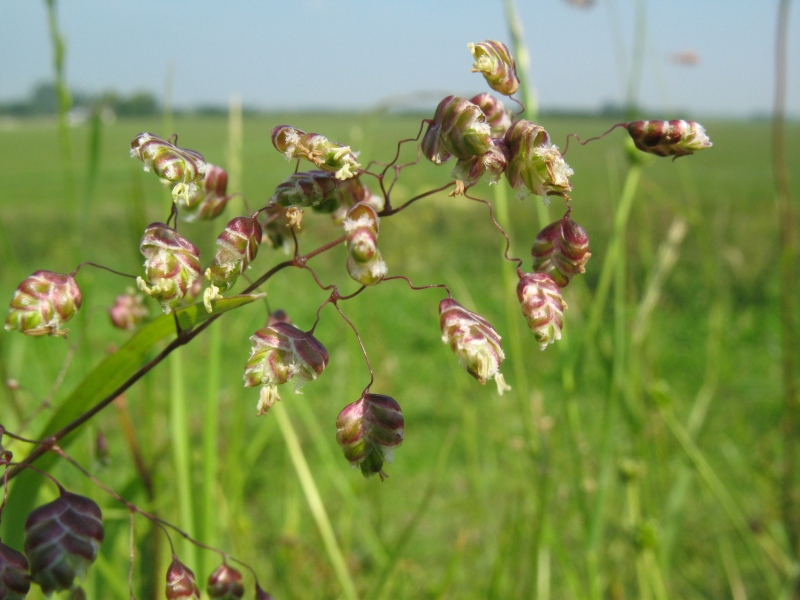
Bluish fescue (Festuca glauca)
Blueish fescue is a depression-growing ornamental grass which oftentimes appears as a charming addition in rock gardens. The unique color of this plant looks smashing when combined with various flowers - but make sure they aren't too tall. Information technology's especially essential, because this decorative grass grows no taller than 20-25 cm.
The soil for a bluish fescue should exist dry, and the spot must be sunny. The ornamental grass is resistant to various atmospheric condition conditions - even low temperatures. To ensure its cute appearance, you can trim it from fourth dimension to fourth dimension.
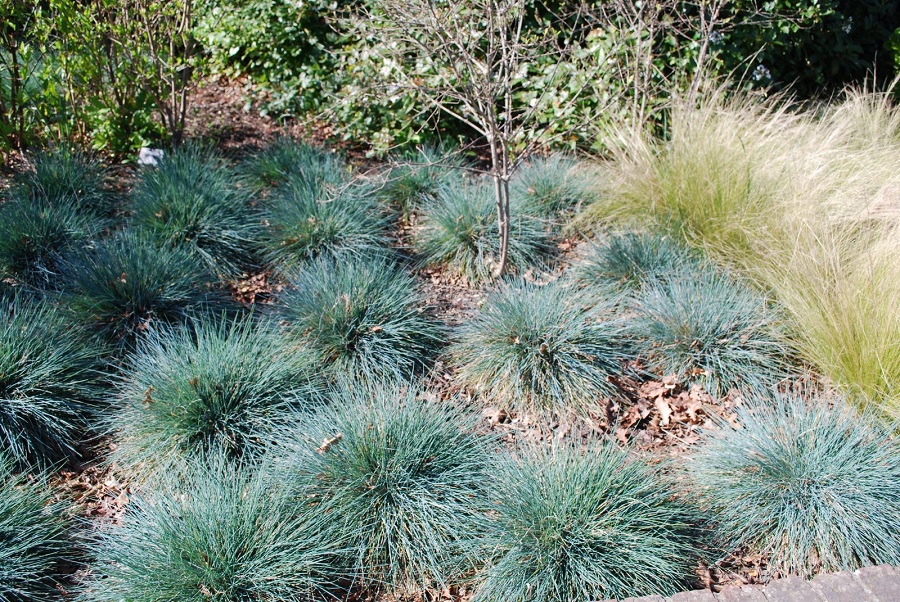
Gilded sedge (Carex aurea)
Aureate sedge grows in small clusters, which amaze with their yellowish-green color and make a stunning garden decoration. Although it's not tall, it grows higher than other low-growing ornamental grasses. Depending on the conditions, it tin can reach up to 60 centimeters.
Golden sedge loves growing in one-half-shade. Fertile soil is an of import aspect for this institute. The ground should besides exist constantly moist, hence it'southward a pop decorative grass planted past ponds and lakelets.
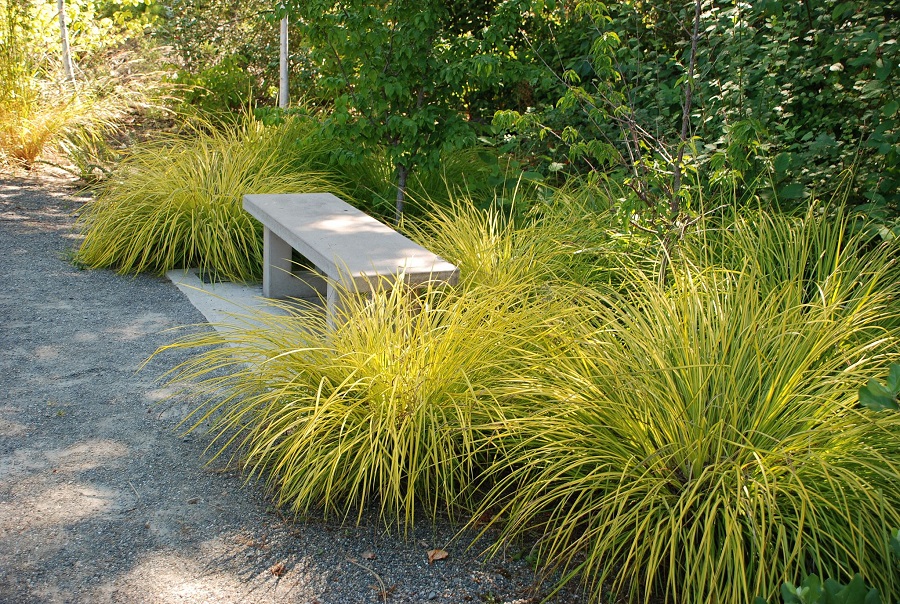
Creeping velvet grass (Holcus mollis)
Creeping velvet grass is an exceptionally low-growing ornamental grass. Its height typically doesn't exceed 20 cm. For this reason, it'southward a perfect free plant for modest gardens. Additionally, information technology's fairly easy to have care of. It likes growing in full dominicus and half-shade. The soil should be moderately moist, simply a temporary dryness is non a problem either.
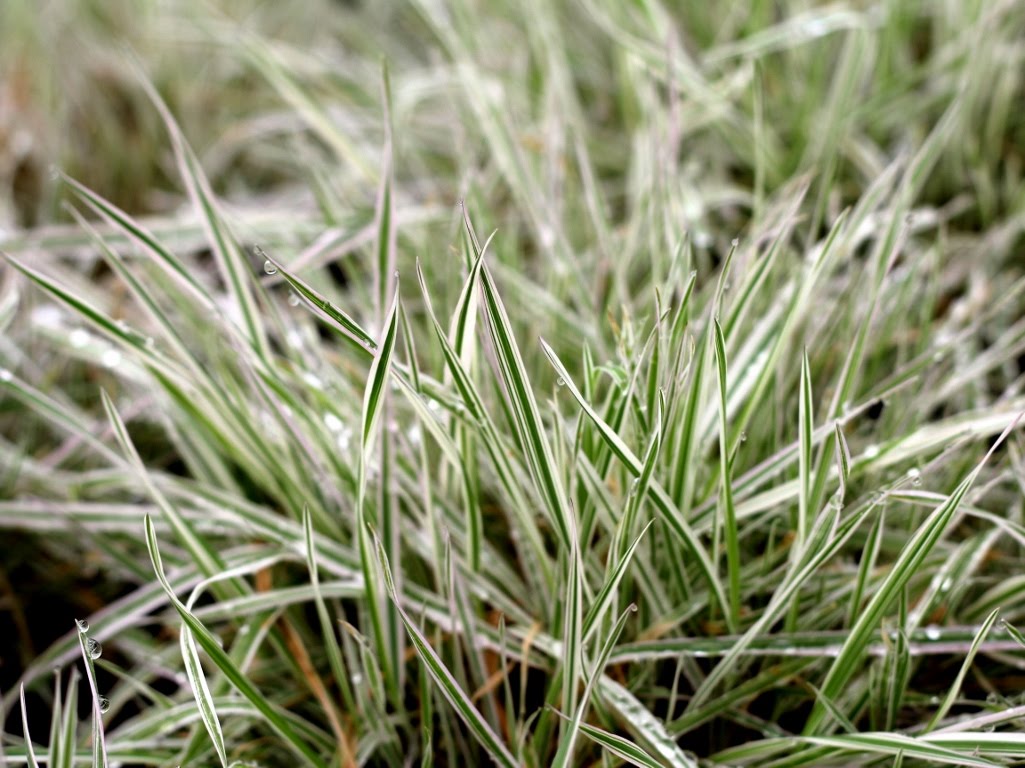
Tall ornamental grasses
Alpine ornamental grasses are a perfect solution for large gardens. They are perfect grasses for landscaping, when you desire to arrange a vast area, just take no fourth dimension to take care of plants. The ornamental grasses from this category accept different requirements, depending on the species. Check which ones are the best for you.
Switchgrass (Panicum virgatum)
Switchgrass is an ornamental grass offer stunning colors. Its endings change their shade, and turn red or even purple. Switchgrass is a blooming ornamental grass - the blooming flavour typically falls between July and the terminate of winter.
Decorative grasses similar switchgrass need a constantly moist, fertile soil. Yet, they can withstand worse atmospheric condition for a short fourth dimension - without losing the aesthetics. What's important, switchgrass must exist planted in total sun.
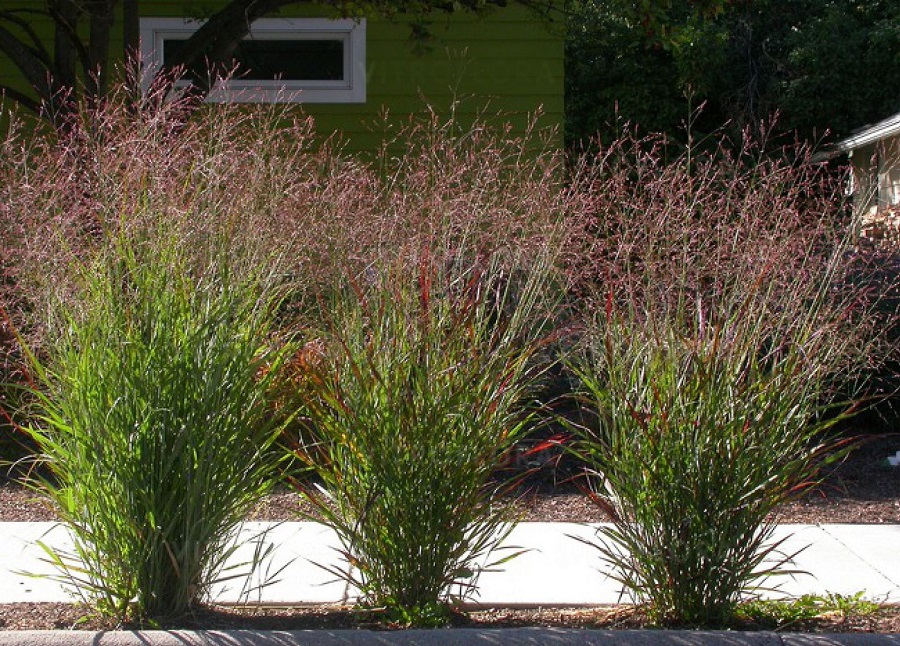
Hairawn muhly (Muhlenbergia capillaris)
Hairawn muhly stuns with its looks and rich color. Some call it simply muhly grass, and it's one of the near popular pink grasses. It'due south tall, although it never exceeds seventy-eighty cm. This ornamental grass is vulnerable to strong air current, then make certain to plant it in at least partially protected spot. The soil should be slightly moist, and it doesn't have to be fertile. The plant is frost-resistant.
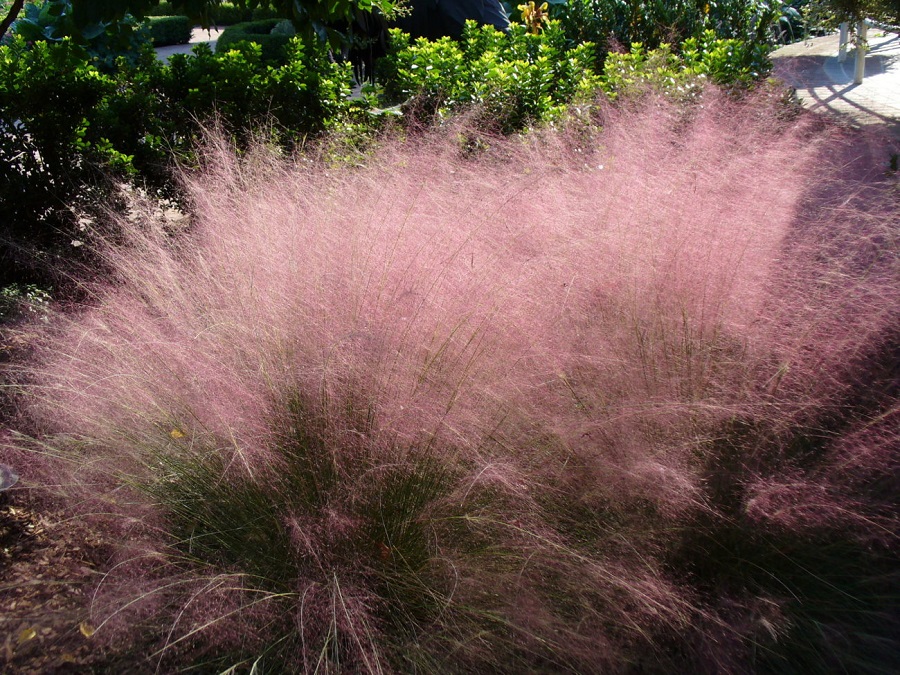
Foxtail fountain grass (Pennisetum alopecuroides)
Foxtail fountain grass is one of the most difficult species of ornamental grasses. The soil for this institute has to be very fertile, permeable and moderately moist. The spot must be sunny - zero can cast shade on it, otherwise, the found'south development might go hindered.
The name of this ornamental grass is not a coincidence. The bloom resembles fluffy play a joke on tails growing on long stems. Thanks to this, the foxtail fountain grass makes an original garden decoration.
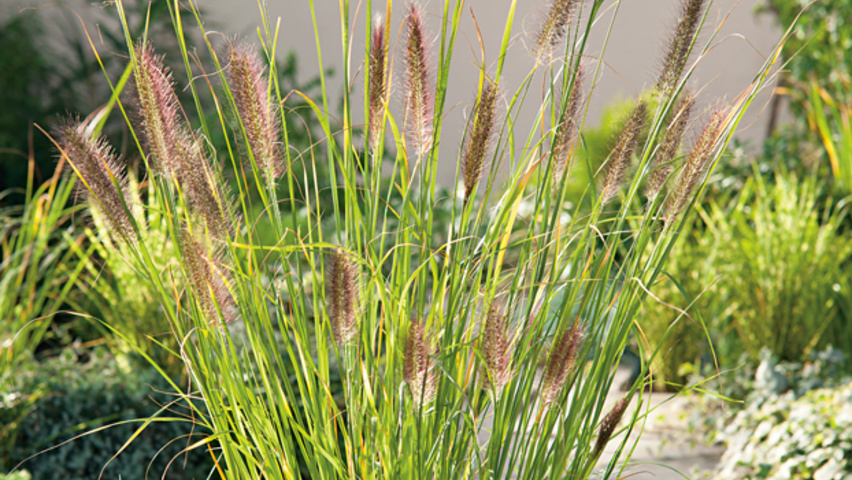
Tufted hairgrass (Deschampsia cespitosa)
Tufted hairgrass, for a alter, is one of the easiest ornamental grasses. Although it grows best, reaching the tallest size when planted in full dominicus, it tin likewise exist used in shaded spots. Moist soil is the only requirement.
The appearance of this found is particularly noteworthy. Large, bright blossoms expect like clouds from afar. The blooming period falls between June and July - unfortunately, it doesn't terminal long.
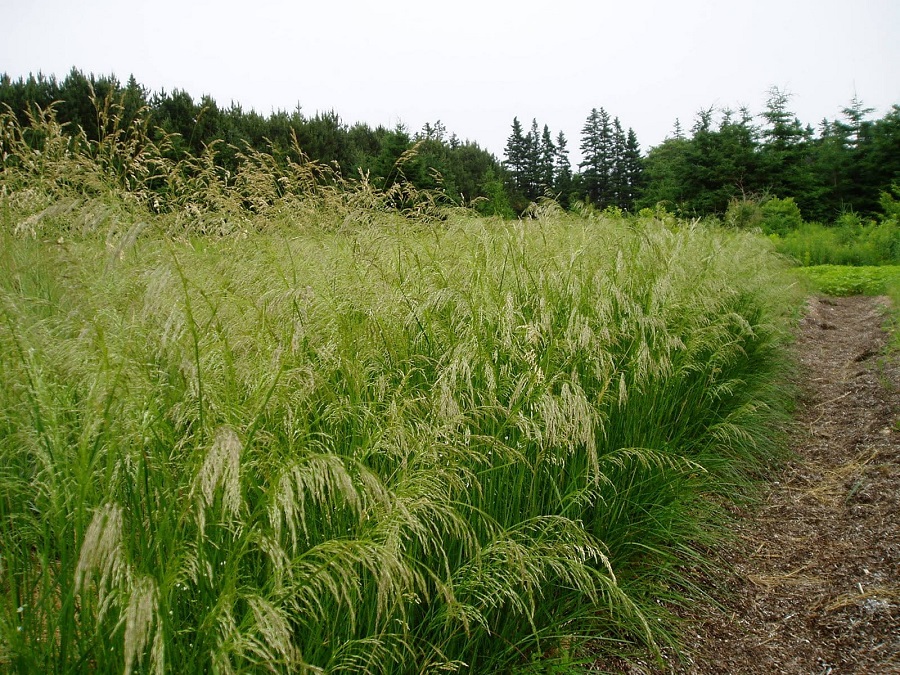
Cortaderia (Cortaderia selloana)
Cortaderia is ane of the most popular ornamental grasses, and it has many uses. Continue in mind few know it by this very name. The plant is ordinarily known every bit pampas grass.
Such alpine decorative grasses require very fertile soil, best if rich in humus. The footing should be moderately damp. Yous tin can count on the best evolution if you institute cortaderias in a sunny spot.
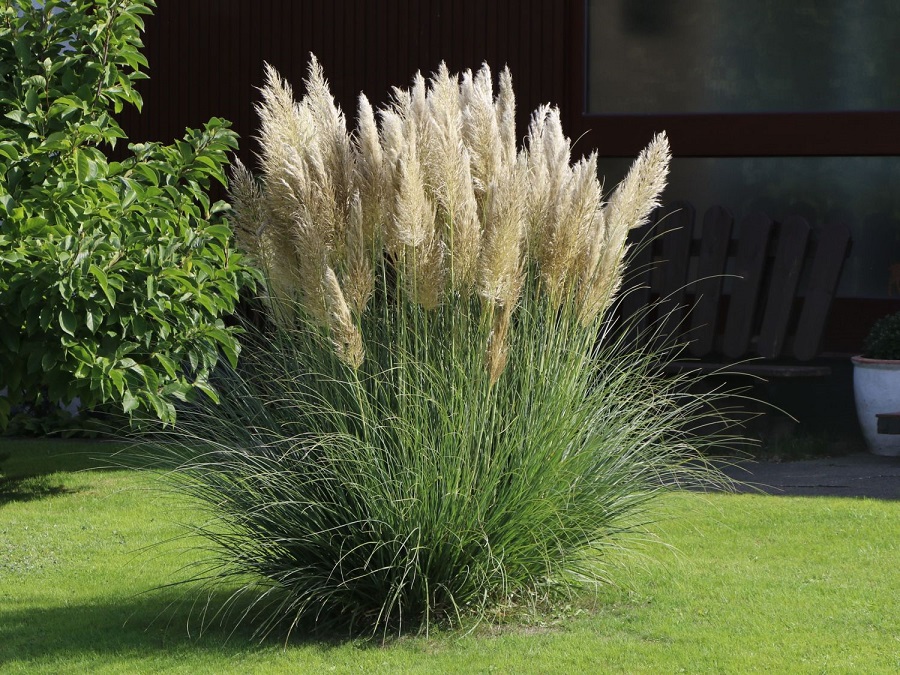
Elephant grass (Arundo donax)
Elephant grass is one of the tallest ornamental grasses grown in gardens. It tin grow upward to 2 meters alpine. It's easy to grow - although it needs fertile and moist soil. This blazon of grass grows best in total sun. Simply the spot shouldn't be in an open space, as the current of air might pause it or lay it down.
Elephant grass blooms sometimes. But it's a rare occurrence, so don't expect information technology to happen.
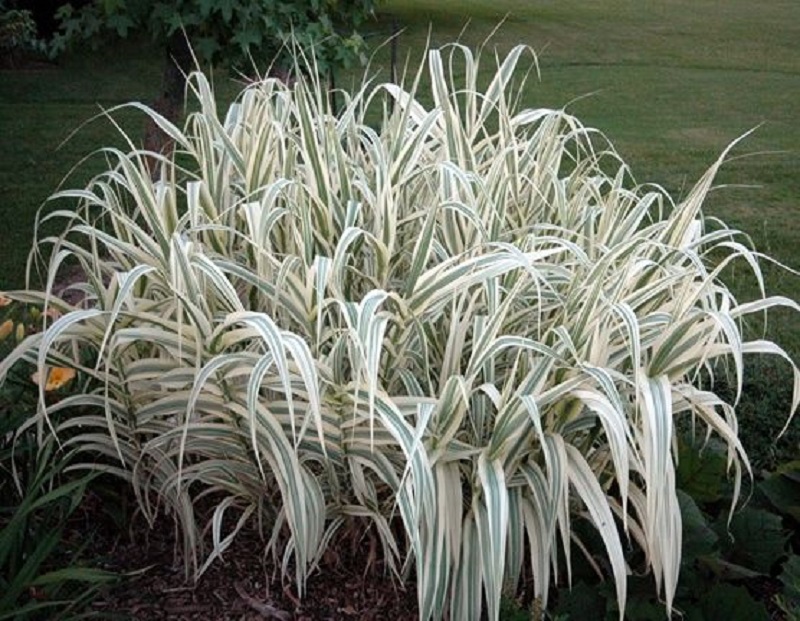
Lakeshore bulrush (Schoenoplectus lacustris)
Lakeshore bulrush in nature grows in swampy areas and by water reservoirs. It's also known as common club-rush. Information technology can attain impressive heights - even 3-4 meters. You lot can easily grow it in your garden also. Remember about the right conditions. The spot should exist in slight shade and the soil should be a mixture of sand and dirt.
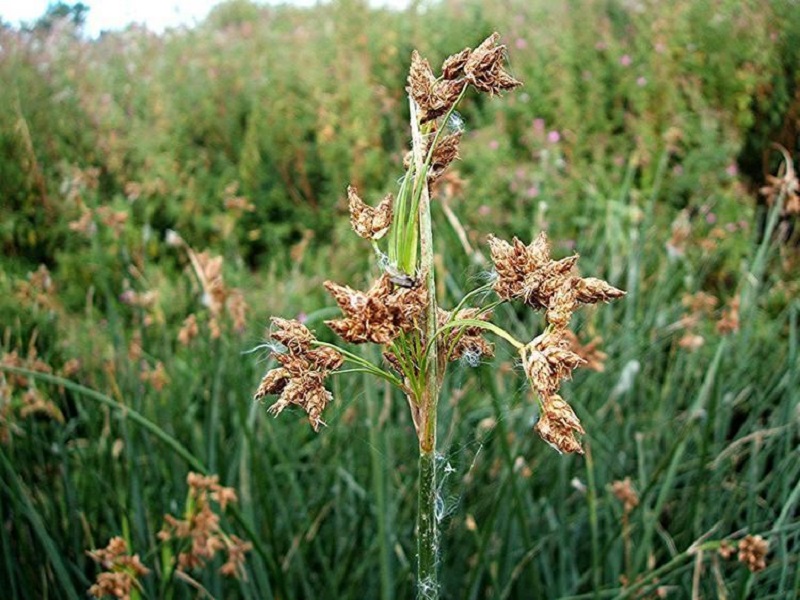
Siberian melic grass (Melica altissima "Atropurpurea")
Siberian melic grass, just like many other decorative grasses, loves growing in full lord's day or half-shade. Brand sure to plant it in sandy and moderately clammy soil. The plant doesn't behave a great decorative value, although many gardeners capeesh it for its majestic blossoms.
Siberian melic grass is often used indoors - in the dried form. It tin can go a part of ornamental arrangements.
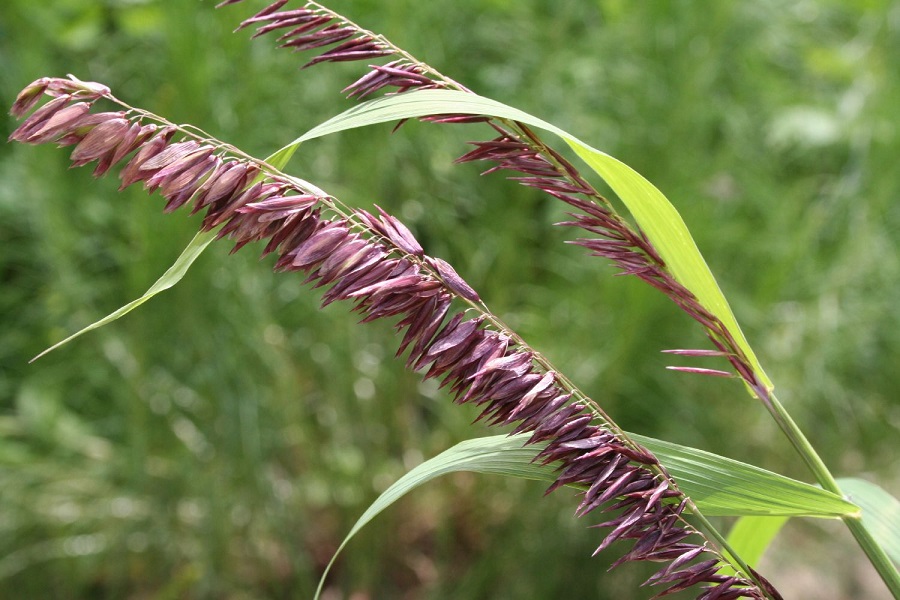
Foxtail barley (Hordeum jubatum)
Foxtail barley is a popular ornamental grass known across the whole earth. It grows upwards to sixty centimeters, forming characteristic broad and thick clusters. This type of barley prefers fertile ground. The soil should be always clammy. Even a curt drought might affect the appearance of this plant.
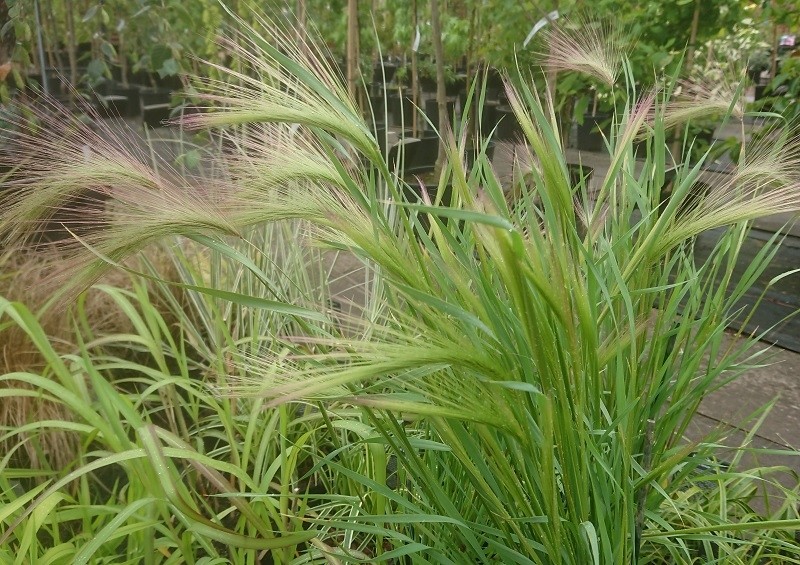
Ornamental grasses for shade
Although about ornamental grasses love sunny spots, there are as well types growing but in shade or half-shade. As for such plants, information technology'due south important to follow certain rules when taking intendance of them. This way, you tin make them await dandy for a long time.
Bearskin fescue (Festuca scoparia)
Bearskin fescue gained its proper noun thank you its unusual appearance. It might resemble ordinary green grass - the difference lies in the grass blade's structure, and the fact that this decorative grass forms characteristic round clusters.
This ornamental grass is exceptionally easy to grow - it doesn't need any special care except from trimming by the end of summertime. The spot is a crucial element, though - it should exist shaded and at least partially protected against the air current. As for the soil and humidity level - the blazon is not important, but the basis must be moderately moist. Regardless, temporary droughts aren't dangerous for this plant.
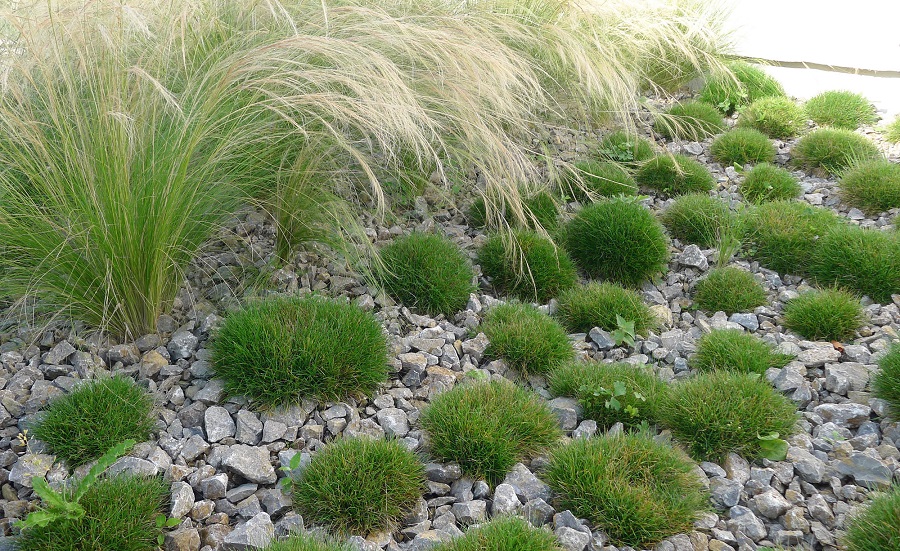
Black mondo grass (Ophiopogon planiscapus)
Black mondo grass is often classified as an ornamental grass, although it'southward a perennial. Thanks to its appearance, one can include this plant in the group of grasses - the classification can stand, in this instance.
The leaves of a black mondo resemble regular grass. Their color is dark light-green mixed with majestic and black. The found blooms in summer and develops small bells. Subsequently blooming, the flowers turn into fruits - looking similar small beads.
The soil for a black mondo should be moderately fertile and moist. In case of a drought, make certain to water and feed the plant regularly.
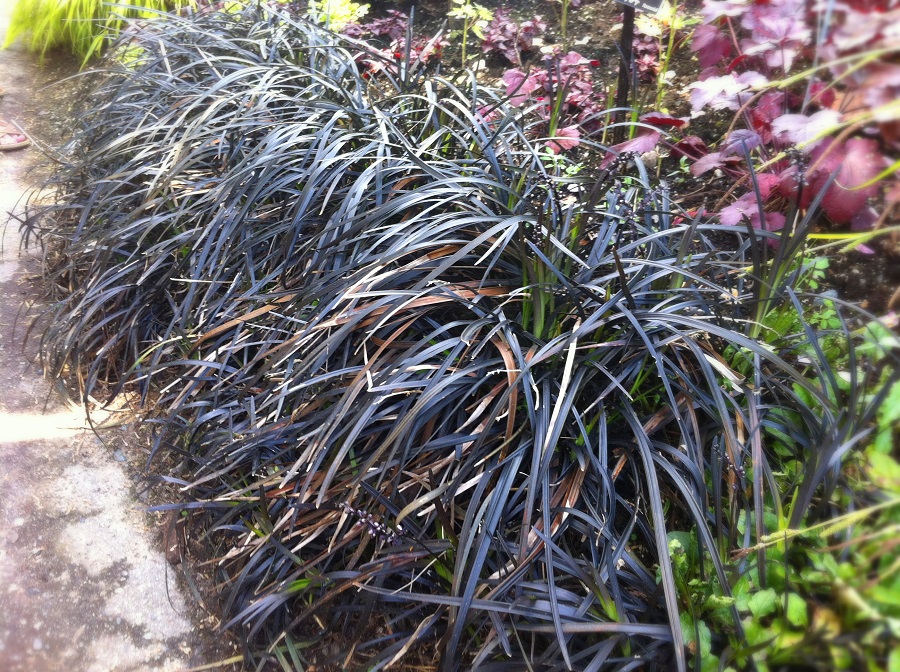
Hakone grass (Hakonechloa macra)
Hakone grass resembles a bamboo. The leaves are quite narrow and have long streaks past the edges. The clumps formed by this plant aren't alpine - usually, they reach up to thirty cm. The ornamental grass is resistant to low temperatures, although when they drib, the found turns slightly pink.
This species benefits from fertile, permeable soil. The spot should be sunny, although the plant can abound perfectly in shade as well.
In addition to planting this ornamental grass in the garden, you can also put it in containers on the balcony or indoors. It'southward a beautiful decoration, and it doesn't demand as well much attention.
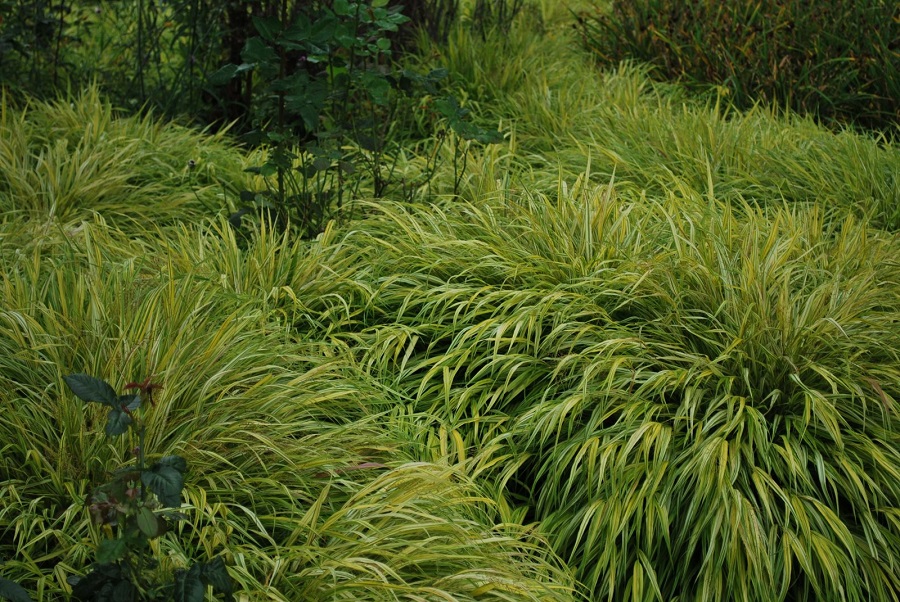
Sedge (Carex)
Sedges (Carex) are in fact a group of plants with over 2000 varieties. Practically each of them looks like classic grass grown in gardens. The virtually popular types include:
- lesser pond-sedge (Carex acutiformis)
- carex bohemica (Carex bohemica)
- tuft carex (Carex cespitosa)
- dioecious sedge (Carex dioica)
- elongated sedge (Carex elongata)
- fewseeded bog sedge (Carex microglochin)
- boreal bog sedge (Carex magellanica)
- few-flowered sedge (Carex pauciflora)
- remote sedge (Carex remota)
- carex contigua (Carex spicata)
- long-stalked yellow-sedge (Carex lepidocarpa)
- bladder sedge (Carex vesicaria)
Ornamental grasses similar sedge prefer clammy soils, although they don't have to be fertile. Whether the spot is sunny or shaded is not important, in this case.
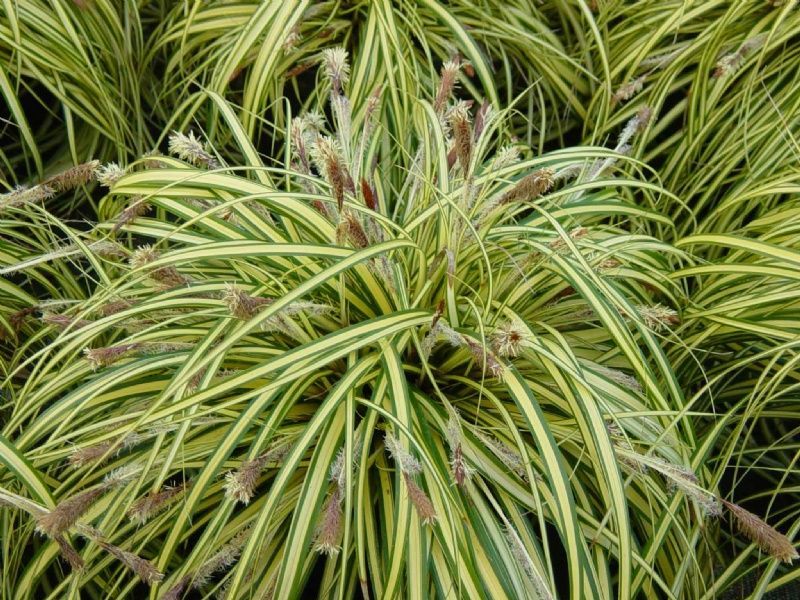
Moor grass (Molinia)
Moor grass is an ornamental grass that grows in tight clusters. It tin can be frequently encountered near pine forests. In that location are two chief varieties of moor grass - the shorter purple moor-grass and the taller Molinia arundinacea. Each of the type includes multiple sub-species, which are from 75 centimeters to fifty-fifty 2 meters tall. The leaves of these plants have different colors - from green, through yellowish, brown and majestic.
Moor grasses grow well in calcium rich, likewise as acidic soils - they don't have any special needs. Just make sure the basis is damp all the fourth dimension - this ornamental grass naturally grows in damp areas and wetlands. Every bit for the spot, the plant prefers either sunny or shaded areas, which depends on the multifariousness.
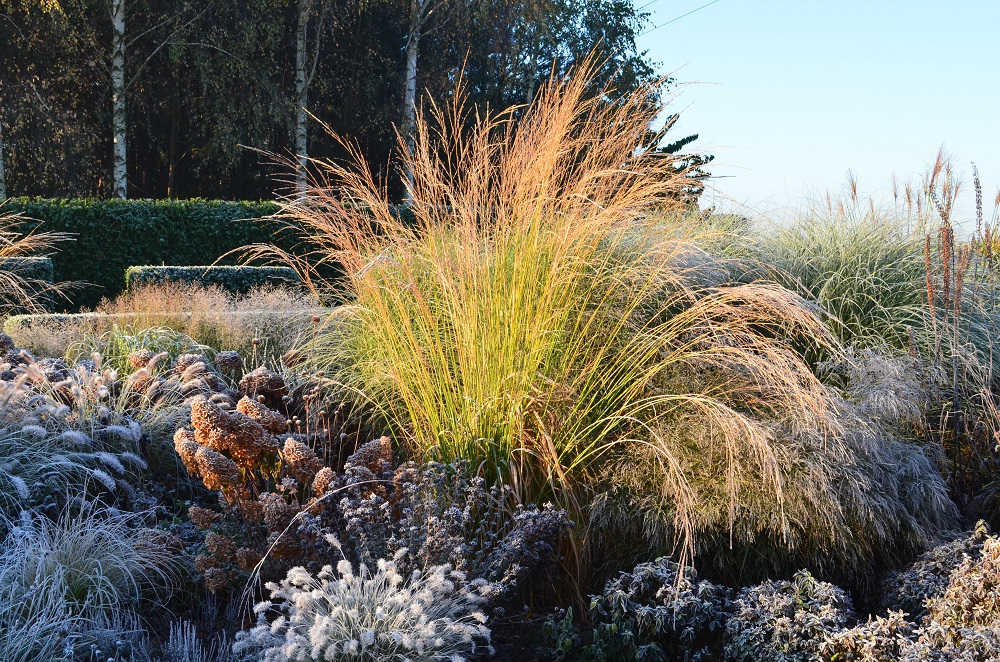
📍 How to plant ornamental grasses?
Decorative grasses shouldn't be planted as well shut to each other, every bit they might grow into each other afterward some fourth dimension - disturbing the aesthetics of your garden. fifty-60 centimeters is the minimal spacing betwixt ornamental grasses.
📍 What are the all-time decorative grasses for shade?
Bearskin fescue and black mondo are the all-time ornamental grasses that tin can grow in shade. Other good species include: hakone grass, sedge and moor grass.
📍 When to found ornamental grasses?
The time for planting ornamental grasses mostly depends on the requirements of the species. Well-nigh grasses for garden can be planted in spring.
📍 When exercise ornamental grasses start growing?
Ornamental grasses typically start growing in spring. These plants fully develop in summer. Nearly of them retain their advent through winter every bit well.
Source: https://treehouse.co/us/blog/22-ornamental-grasses-for-landscaping-best-decorative-grasses.html
Posted by: wolfeweepatien.blogspot.com

0 Response to "How To Plant Decorative Grass"
Post a Comment